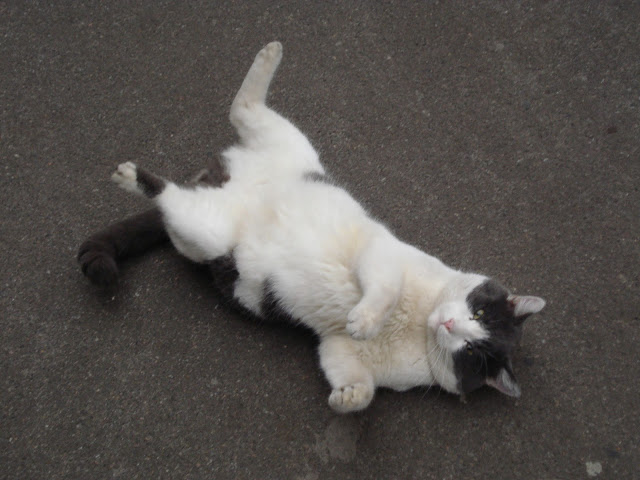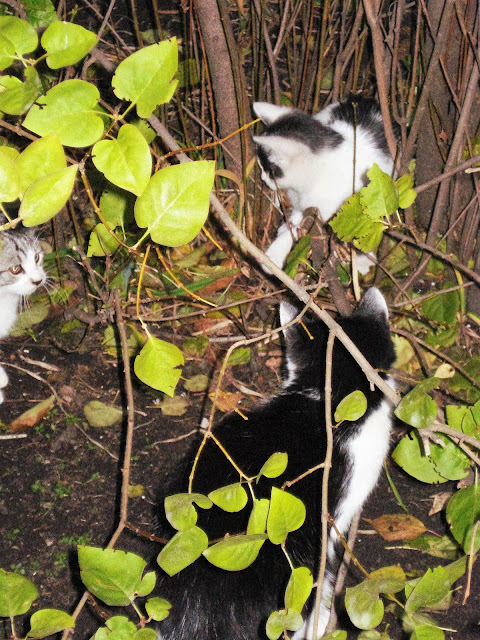On March 1, the whole world celebrates the International "Cat" Day.
From time immemorial these fluffy creatures intrigued people by their mysteriousness, and therefore numerous legends were spread about them all over the planet. When did cats appear? And what is their history?
History of Felines
Wildcats,
the ancient ancestors of modern cats, appeared in Mesopotamia (present-day
Iraq) 130,000 years ago.
However, they were only domesticated about 10,000-12,000
years ago. Mesopotamians bred their cats and used them to catch rodents which tried
to devour their grain harvest.
The ancient Egyptians made wildcats
their pets about 3500 B.C. and started
to treat them with profound reverence, because they truly believed that cats
were gifts from the gods. Later the Egyptians created a cult of cats to worship Bastet, the goddess of fertility,
depicted with a cat’s head and a woman’s body. She protected hearth and home from evil spirits.
Around 1500 B.C., cats became sacred by the laws of ancient Egypt and
those who dared kill them were condemned to death. Moreover, the ancient Egyptians
mummified their dead cats and buried
them in sacred receptacles. They also shaved the eyebrows to show their deep grief and only stopped
mourning their loss when their eyebrows had grown back.
The Egyptians valued their cats’ lives
more than human ones. In case of imminent danger, such as fire, people tried to
save their cats in the first place even by risking their own lives.
According to the Egyptian laws, these sacred animals were not allowed to export from the country. However, Phoenician traders found a way to bring these precious animals to Europe by smuggling them out of a country. Thus, cats first appeared in Europe about 1000 B.C., where they were used to get rid of rodents. For the ancient Romans, the Egyptian cat became the guardian spirit of their home.
According to the Egyptian laws, these sacred animals were not allowed to export from the country. However, Phoenician traders found a way to bring these precious animals to Europe by smuggling them out of a country. Thus, cats first appeared in Europe about 1000 B.C., where they were used to get rid of rodents. For the ancient Romans, the Egyptian cat became the guardian spirit of their home.
Nevertheless, a cat’s life wasn’t that easy during
the Dark Ages, in times of superstitions and fears born by profound ignorance. In
Medieval Europe all cats were associated with black magic and for that reason
thousands of these poor creatures were annihilated without remorse.
However, later on the Europeans finally realized that the extermination of cats caused the outbreak of the bubonic plague in 1348, because rodents started to propagate uncontrollably.
As a result, fortune smiled on long-suffering cats
again.
When the cat family appeared in Asian countries, they were primarily used for the protection of silkworm cocoons from rodents. In Japan, cats were guardians of the home. And in the 10th century, only noble people could be their proud owners.
When the cat family appeared in Asian countries, they were primarily used for the protection of silkworm cocoons from rodents. In Japan, cats were guardians of the home. And in the 10th century, only noble people could be their proud owners.
Furthermore, cats became an object of admiration in Oriental countries
for their mysterious behavior and feline grace. They were even immortalized in
Japanese and Chinese art.
In the 15th century, cats sailed on ships with seamen to exterminate vermin.
In the 18th century, these fluffy creatures
were brought to North America from England by colonists and merchants to chase
mice and rats.
In the 19th century, even
queen Victoria of Great Britain showed her ardent
interest in felines and adopted 2 Persian cats. Soon common people in England
and the United States started to follow her example.
Maneki Neko in Japan
In Japan, there is ‘Maneki
neko’, a popular cat’s figure bringing good luck.
According to a legend, a cat raised its paw to wave at a passing landlord
who was attracted by this gesture and decided to come up to the cat. Suddenly a lightning struck where he had
been standing a few moments ago. So that landlord was lucky, because the cat had
saved his life. For this reason, the beckoning cat has become a symbol of good luck,
especially in business.
Health Benefits of Owning a Cat
According to numerous
studies, stroking cats and listening to their purring (generating low frequency
sounds) relieves anxiety, stimulates bone growth, especially after fractures, minimizes
the risk of heart attack and stroke, and can even lower high blood pressure and
‘bad’ cholesterol. Moreover, cats strengthen the immune system, reduce the symptoms of dyspnea and promote better development
of autistic children.
Inventions Inspired by Cats
After comparing philosophers and cats, a French historian Hippolyte
Taine came to the conclusion that the wisdom of cats was infinitely superior.
Tesla, electricity and a cat
At the age of three, Nikola Tesla
(a physicist and electrical engineer) stroked his cat’s back and saw sparks coming
from his hair. The little Tesla was so impressed by this ‘cat’ phenomenon (known
as static electricity) that he decided to devote his life to studying
electricity.
Cat’s eyes and road reflectors
Felines are also known for their specific
night sight, thanks to which reflective road markers were created.
In 1933, Percy Shaw was driving down
a dangerous road in pitch darkness and noticed that his headlights had
reflected in the eyes of a cat. So, thanks to cat’s eyes glowing on the road at
night, Percy invented road reflectors, which saved many drivers’ lives.
The secret of cat’s eyes
Thanks to a reflective layer (tapetum)
in feline retina, cat’s eyes can shine in the dark by making an image brighter.
Inspiring scientists, artists
and movie makers, cats will always attract people by their mesmerizing look and
graceful movements.
By looking into the
depths of your soul, these little wise creatures know how to restore your
peace of mind when your soul is tortured by worries, and fill your heart with joy
when you are in the blues.
P.S.: My blog and photos are dedicated
to cats which I have been watching for years in token of my admiration for
these fluffy animals.
































No comments:
Post a Comment